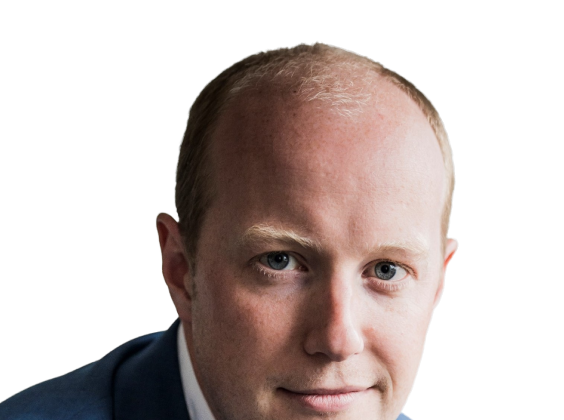
Written by

Hyland is a relatively new name in terms of clinical and imaging IT. It is probably better known for information management platforms, selling into financial services, government, insurance and healthcare. Over the last few years however, it has through acquisition (Acuo VNA, PACSGear, NilRead), come to market with a unique offering to the clinical sector, combining clinical enterprise content management (ECM) with specialist modules for diagnostic and clinical use.
We were kindly invited to attend the Hyland Summit EMEA 2018 in Frankfurt (6-8th November) to hear more about their progress in healthcare and their plans. Here’s our take:
A clear challenge
Interoperability of complex clinical information across growing healthcare networks is one of the biggest issues facing healthcare IT and was a core message from the summit. Case-studies from healthcare providers presenting at the summit provided a refreshingly open and honest discussion around the challenges they’re facing in attempting to tackle this issue.
It was clear that this issue has grown in importance due to the way the health IT sector has evolved. At a macro-level, health providers have become larger and more complex, creating demand for “monolithic” enterprise IT systems that can support key operational processes such as patient administration, finance and workforce management. This can be classed as “generic workflow”, as use generally requires short encounters, high throughput and a need for universal access.
It was highlighted too how care provision has changed, away from single specialty, encounter-based interactions, towards multi-disciplinary, longitudinal care involving clinical stakeholders from many departments. The needs of users in clinical and diagnostic pathways are quite different however, requiring “complex workflows” and use is generally lower throughput, longer encounters and requires inclusion of specialist and unique tools and capability.
Consequently, few health IT implementations have addressed well the fundamental requirements of both needs; large-scale “monolithic” IT with generic workflows have too often been expected to also cater to the “complex workflows” and specialist needs of clinical specialists. When expanding the use of departmental clinical IT systems into the enterprise, most clinical vendors have struggled to handle the scale and performance required to meet “generic workflow” needs. The exit of GE Healthcare and Siemens Healthineers from the EMR marketplace in recent times also exemplifies the difficulty of addressing both solution types, with both opting to focus on the clinical and diagnostic IT sectors exclusively.
Multipronged strategy to maximise opportunity
Hyland has essentially bet the bank on tackling this issue with its healthcare strategy. It was already a significant ECM platform vendor in North America and some select mature international markets, where its main role has been “clinical content enablement” of the installed base of vendors such as Epic and Allscripts, providing a gateway between the “generic” and “complex” workflows discussed above.
With its acquisitions in the diagnostic sector, it has also positioned itself as a direct competitor to traditional PACS and enterprise imaging vendors. Consequently, it has a multi-pronged strategy:
- Building on clinical ECM implementations with its larger EMR partners, expanding into the clinical and diagnostic segment as a clinical archive and management platform – a central clinical platform strategy working and interfacing with existing department systems
- Again, building on clinical ECM implementations with its larger EMR partners, expanding into the clinical and diagnostic segment but as a full capability clinical software partner. On these occasions displacing existing department systems
- Directly competing with enterprise imaging vendors for “full stack” clinical archive, workflow and viewing, regardless of whether it has an ECM presence
- Targeting new clinical ECM opportunities at customers where it has a presence in clinical and diagnostic imaging, e.g. its installed base of PACSGear, AcuoVNA and NIlRead.
This diversification of strategy is on the face of it a sensible approach given the product capabilities it has. Moreover, with the vast differences in health provision between different markets – user needs in North America won’t necessarily be the same as in Germany or Australia – its strategy must be adaptable. It also addresses an often overlooked issue for many vendors, in how to sell into different executive stakeholder functions at health providers; arguably Hyland can already point to experience in working and winning deals with CIOs and CMIOs (Chief Medical Information Officers) from its ECM business.
Hyland has also identified well that there remains an underserved market for combining and consolidating clinical data from siloed departmental systems. The case-studies from providers at the summit confirmed that many had under-invested in this area; consolidating departmental data into a queryable structured registry and repository was now an increasing priority given the demands of multidisciplinary care today and its expected future evolution.
A patient pioneer battling against the tide?
The commendably honest discussions from health providers at the summit did also point to some risks to the Hyland healthcare strategy.
Firstly, the time it takes health providers to implement enterprise-wide clinical platforms is lengthy, often spanning many years. The Hyland solution is not a “quick-win”, as it involves moving providers towards centralising clinical content management across multiple stakeholder groups. This requires cross-enterprise funding, business cases, complex audits and too often, bureaucratic procurement processes, not to mention winning over clinical users. In a market environment where contract rollover is increasingly common, this will be a difficult pitch. To better counter these stakeholder concerns, Hyland should also attempt to demonstrate better return-on-investment (ROI) metrics based on the centralised approach, especially over longer contract periods, something that was not front-and-centre of the summit discussions.
Secondly, the business leaders at Hyland will also have to be patient in terms of financial results; winning long-term enterprise deals tend to hit short term profitability and revenue growth, far from ideal after significant spending on acquisitions. Reassuringly, the CEO of Hyland, Bill Premier, made clear in his general summit remarks that healthcare was a long-term move for the firm, suggesting patience to build a long-term established business.
Thirdly, in entering the clinical and diagnostic sector with its own offering, Hyland has positioned itself in direct competition with some of the biggest healthtech firms such as GE Healthcare, Siemens Healthineers and Philips. All have expressed broad and sometimes vague long-term strategies that involve winning business for enterprise clinical informatics platforms (see our latest coverage here). These firms also boast far larger global footprints in sales operations, not to mention multi-billion-dollar businesses in clinical and diagnostic hardware with health providers, on which they intend to leverage an integrated, bundled managed service offering. While some question marks remain over the maturity and interoperability of their offerings (none offer clinical ECM for example) they are a formidable, incumbent opposition.
Finally, no other vendor has to date managed to successfully combine business from the “generic workflow” enterprise sector for healthcare and the “complex workflow” clinical and diagnostic sector and be successful in both, such is the complexity and competition in both segments. While Hyland does have a unique offering as a market leader in clinical ECM, it is still a small player in the clinical and diagnostic “expert workflow” segment. The underlying question for its healthcare business is how quickly it can grow within a mature market dominated by well-known industry brands. Its multipronged strategy should aid in maximising each opportunity and it is impressive that is has combined a diverse product set from multiple acquisitions into a cohesive offering so quickly. However, this is just the beginning; whether it has the scale of operation, depth of offering and executive patience to win across both highly competitive sectors in healthcare, remains to be seen.
About Signify Research
Signify Research is an independent supplier of market intelligence and consultancy to the global healthcare technology industry. Our major coverage areas are Healthcare IT, Medical Imaging and Digital Health. Our clients include technology vendors, healthcare providers and payers, management consultants and investors. Signify Research is headquartered in Cranfield, UK.
More Information
To find out more:
E: enquiries@signifyresearch.net,
T: +44 (0) 1234 436 150